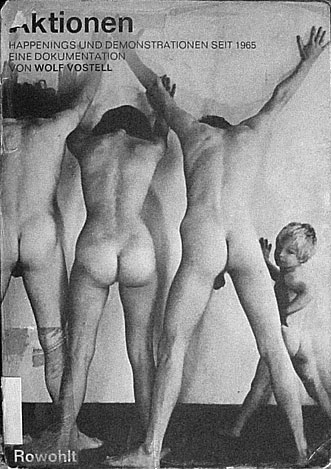Nikolaï Taraboukine (Nikolai Tarabukin), Le Dernier tableau (1923), translated from the Russian by Michel Pétris and Andrei B. Nakov (Paris: Champ Libre, 1972), 56.
John Cage, score for 0’00’’ (4’33’’ no. 2), Edition Peters no. 6796 (New York: Henmar Press, 1962).
Ibid. See also Branden W. Joseph, Beyond the Dream Syndicate: Tony Conrad and the Arts After Cage (New York: Zone Books, 2008), 161, 405 (note 21).
For Thierry de Duve’s account of generic art, see Kant After Duchamp (Cambridge, MA and London: MIT Press, 1966).
Huizinga’s study Homo Ludens (first Dutch edition 1938) was an important point of reference for the early Situationist International, although this importance faded in the early 1960s as the Debord-dominated SI became a more explicitly Marxist revolutionary project. For Constant’s New Babylon, Huizinga’s analysis of the importance of “the play-element of culture” remained a cornerstone.
Huizinga’s study Homo Ludens (first Dutch edition 1938) was an important point of reference for the early Situationist International, although this importance faded in the early 1960s as the Debord-dominated SI became a more explicitly Marxist revolutionary project. For Constant’s New Babylon, Huizinga’s analysis of the importance of “the play-element of culture” remained a cornerstone.
Huizinga’s study Homo Ludens (first Dutch edition 1938) was an important point of reference for the early Situationist International, although this importance faded in the early 1960s as the Debord-dominated SI became a more explicitly Marxist revolutionary project. For Constant’s New Babylon, Huizinga’s analysis of the importance of “the play-element of culture” remained a cornerstone.
See Constant, “Het principe van de desoriëntatie,” in New Babylon (The Hague: Haags Gemeentemuseum, 1974), 76-86.
See Constant, “New Babylon,” Provo no. 4 (October 28, 1965): 6,8.
Provo no. 4: 18-19.
An impressive attempt at transcription can be found in the publication Dit hap-hap-happens in Amsterdam (Amsterdam: Arbeiderspers, 1966), unpaginated.
As with Burroughs, addiction and its exorcism play central role in Grootveld's work (his "new labor"). Tobacco was the big enemy. Recognizing the ritualistic element in smoking, Grootveld turned his happenings into absurdist quasi-rituals to exorcize the demons of control and addiction. Grootveld characterized happenings as "vacuums in time, with as many people as possible in attendance." In his collective vacuums, young people took to collectively chanting the coughing refrain "uche, uche, uche!"
See Eric Duivenvoorden, Magiër van een nieuwe tijd. Het leven van Robert Jasper Grootveld (Amsterdam and Antwerpen: De Arbeiderspers, 2009), a.o. 147-148, 255.
"Klaas Must Pay Some Day" was a phraseused on several pamphlets and posters, for instance on the poster Beter oorlam dan oorlog, no. BG D68/34 in the Porvo Archive at the International Institute for Social History in Amsterdam.
Ibid, 347-349.
Friedrich Engels, Anti-Dühring (1877), part 3.IV. In an earlier part of Anti-Dühring (3.I), Engels discusses Owen's Labor Exchange.
For an analysis of the transformation of "time as measure" into "time of life," see Antonio Negri, "The Constitution of Time" (1981), in Time for Revolution, trans. Matteo Mandarini (New York: Continuum, 2003), 21-138.
See →.
Franco "Bifo" Berardi, Precarious Rhapsody (London: Minor Compositions, 2009), 69-71.
Franco "Bifo" Berardi, "The Future After the End of the Economy," e-flux journal no.30 (December 2011), see →.
Theodor W. Adorno, Ästhetische Theorie (Frankfurt am Main: Suhrkamp, 1970), 470-471.
These two pamphlets, kept in the Provo Archive at the International Institute for Social History (box 2, folders 3 and 4, pamphlets no. 115 and 116) appear to be part of a game that aimed to have Van Hall put in a personal appearance at the Frascati Theater, where he could cash his check (originally 1000 guilders, then increased to 2000 as an extra incentive).
See Susan Buck-Morss, "Hegel and Haiti" in Critical Inquiry 26, no.4 (Summer, 2000), 821-865.
Migration of Surinamers to Holland had been legally facilitated in 1954 but accelerated in 1970 when Surinam's economy collapsed, and again around the middle of the decade when Surinam decame independent. In 1974, an ensemble called Henk and his Stainless Steelband had a hit with the song "Wij willen WW," which depicts Surinamers as being out to profit from Dutch unemployment benefits (a notion that the song ultimately legitimizes as payback for Dutch colonialism.
Hito Steyerl, "Art as Occupation: Claims for an Autonomy of Life," e-flux journal no.30 (December 2011), see →. A different version of this text, which was delivered at the Autonomy Symposium at the Van Abbemuseum, will be published in Open magazine.
See Guy Debord's letter to the Cercle de la Librairie (June 27, 1963) in Correspondance volume 2, septembre 1960-décembre 1964 (Paris: Fayard, 2001) 244-247.
“The Situationists and the New Forms of Action in Politics and Art.” See the English translation by Ken Knabb at →.
